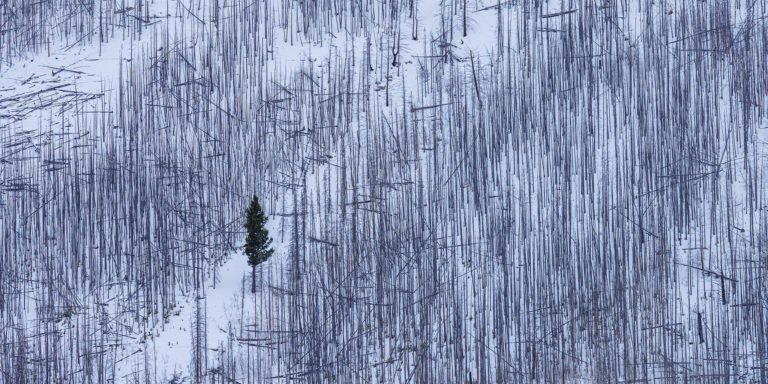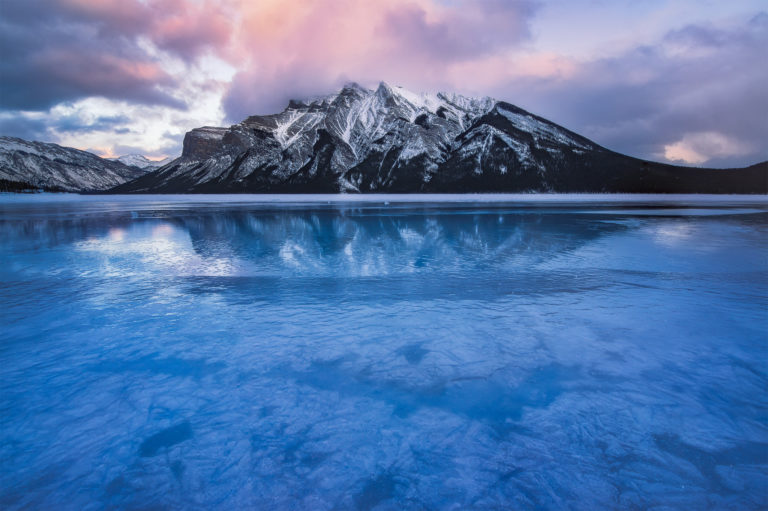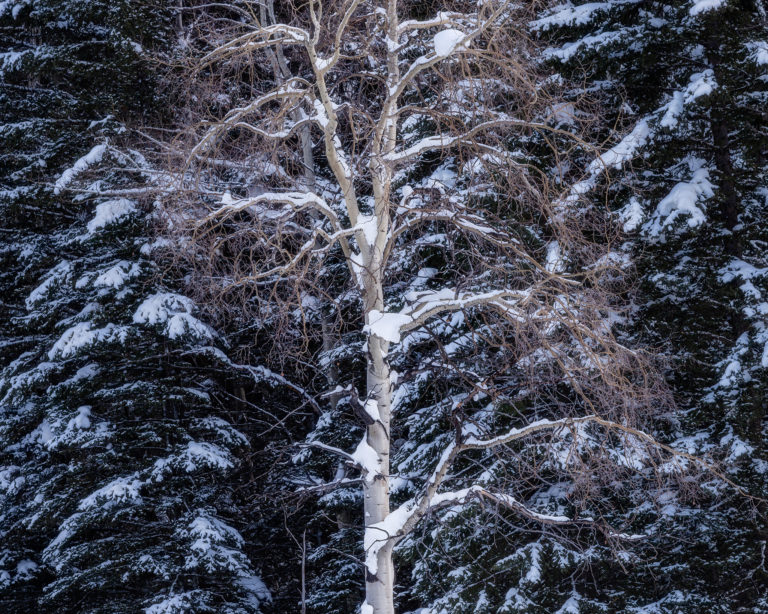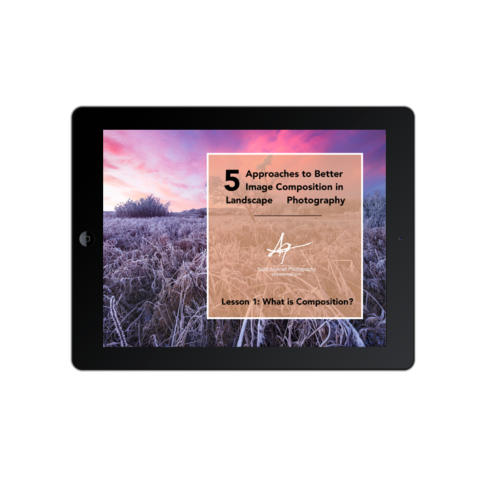Upon arriving at the lake, I knew immediately that those conditions would not be present. The snow had covered the bubbles and cracks in the ice, save for a small patch of open ice at the base of the mountain. Unfortunately, it was too near the peak to include the ice with the dominant mountain in a single photograph. Foot tracks from hordes of tour groups covered potential compositions along the shoreline, and there was flat, boring light from heavy cloud cover. But my expectations of what I wanted the landscape to be, were entrenched in my mind. So, instead of fighting those expectations, I searched for wide-angle compositions that resembled what others had succeeded in composing at this location. I only succeeded in becoming increasingly frustrated with my experience. After forty-five minutes of exploring, I found nothing to photograph. My expectations had left me blind to the photographic potential of Lake Minnewanka. I knew that I failed creatively.
What We Can Do To Remove Expectations
Before we can begin to take more creative landscape photographs, we need to remove our expectations. But practically, what can you do to assist in this mental process? Here are a few things that have helped me get over, or avoid expectations, as I visit locations:
- Leave behind a lens that would force you into a specific photo.
- Leave your camera bag in the car when you arrive on location, spending some initial time wandering. As you wander, take inventory of things that you are enjoying. Pack a small notepad or use your cellphone to take notes about what is speaking to you. Try and distill a scene down to very specific elements that you appreciate.
- Before a landscape photography outing, limit your exposure to professionally finished photos to ensure your mind remains free from what others have accomplished at a specific location.
Ultimately though, if we are unable to remove or avoid expectations, we can’t be as creative as we can be. Expectations will always cause us to be blind to parts of the landscape. If conditions don’t work in our favour, frustration can set in. Even if conditions are perfect and we get the photograph we wanted, we still miss out on the opportunity to connect with that location as a whole. If I had succeeded in capturing what I expected to at Lake Minnewanka, I would have missed out on a scene that was much more personal and meaningful.
My unfulfilled expectations caused a great deal of frustration for me that evening, almost causing me to leave. But, as I toyed with the idea of just giving up, I decided instead to make the best of the conditions that I had been given. So, I decided to head to the car and left my wide-angle lens behind. This forced me into a state of no expectations. The wide-angle photograph I desperately wanted wouldn’t be possible anymore. Instead, I was forced to look only at details using my telephoto lens to take advantage of the light that I had.
As soon as I stepped back on the frozen lake, I saw the landscape in a brand new way. I saw potential in the open ice that was too close to the mountain. There were possible compositions that included the aspen trees along the lake edge with the darker forest behind. And, there was photographic potential in the scattered thriving trees among the burnt forest on the mountainside. Before, I was blind to these things. Now I saw and enjoyed them because I had connected with what I had been given. I was bringing my story, my preferences, my emotions, and an open mind to the landscape, which allowed me to see more creatively. Also, I was able to take a photograph that succeeded in telling a story about Lake Minnewanka in a way that a wide-angle photo of the mountain with beautiful light would ever be able to do.
Coincidentally, these types of photos go beyond just adding to the story of a particular location, they also can connect with a viewer on an emotional level beyond the superficial physical beauty of a photograph. Once we shed our expectations and are open to what we uniquely notice about the landscape, we can create photos that connect with a part of our own and our viewer’s story. We give ourselves and our viewers the ability to connect emotionally to an idea or an emotion.




